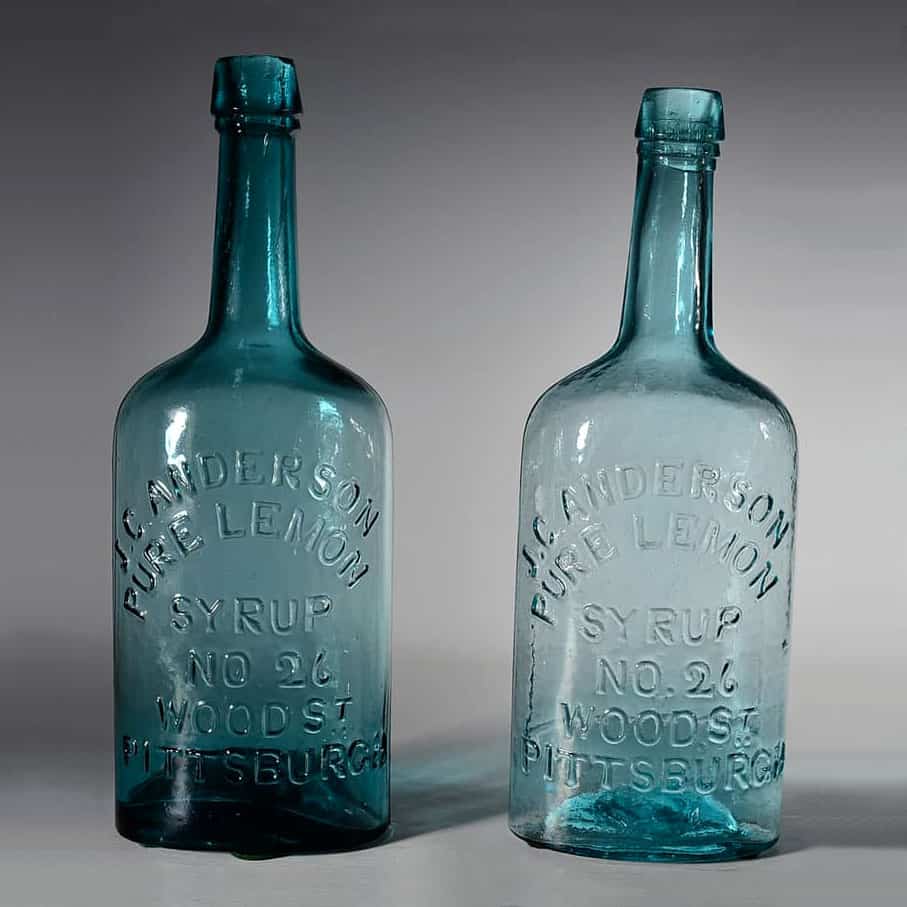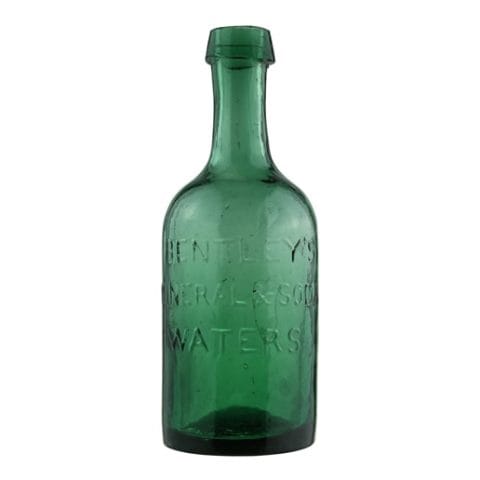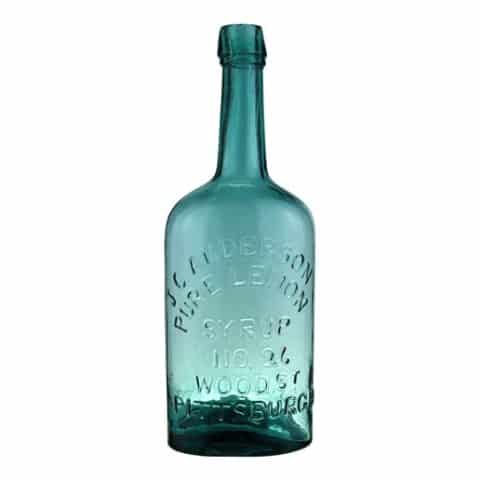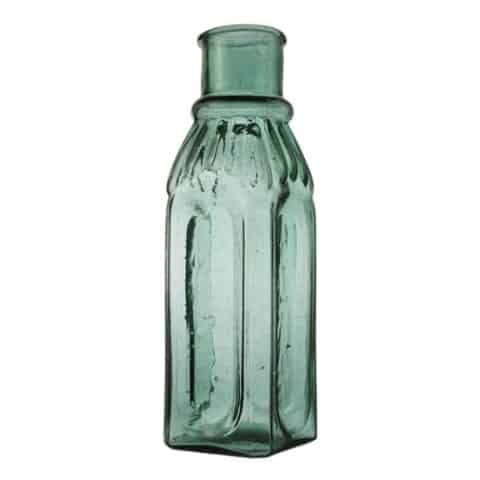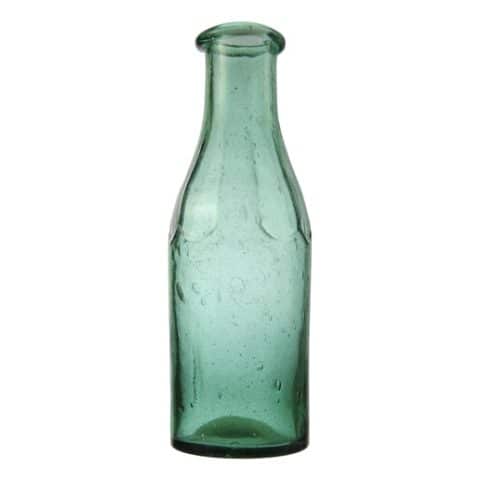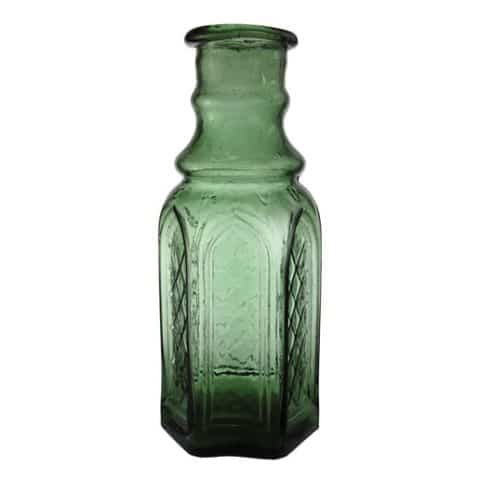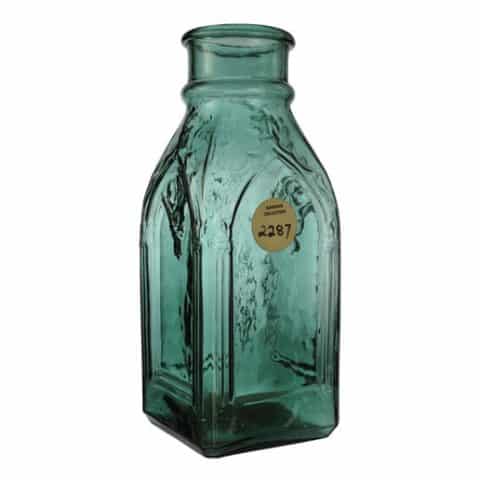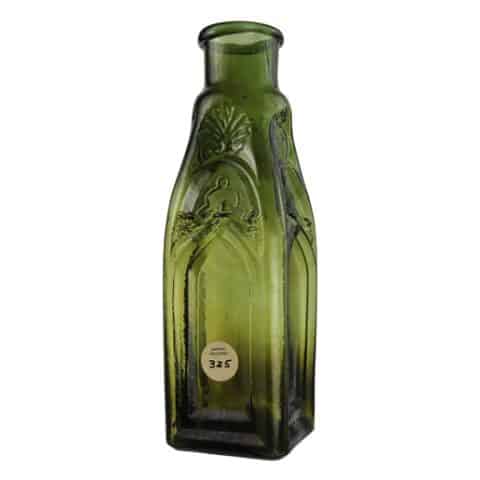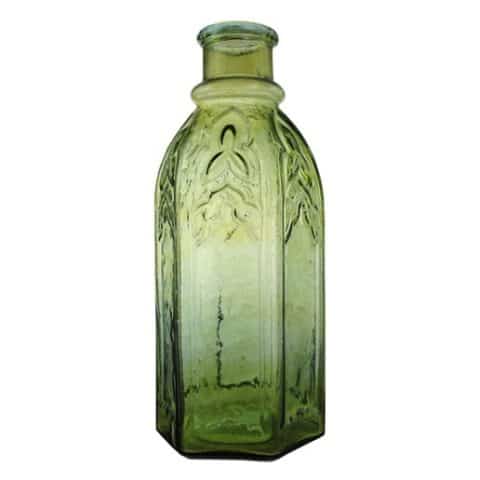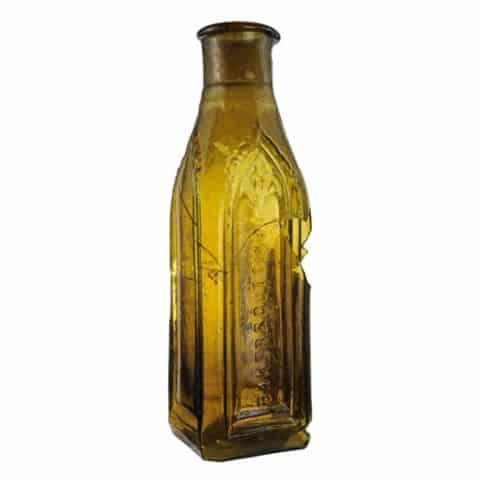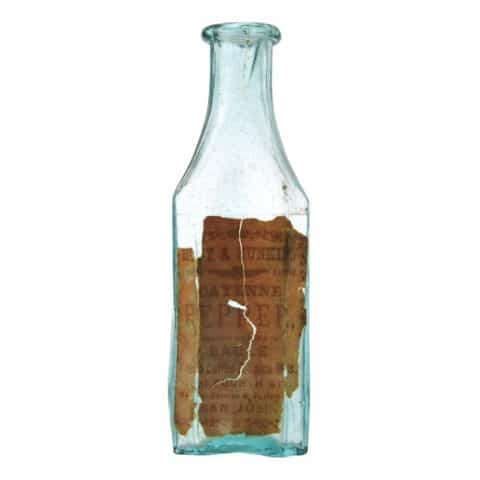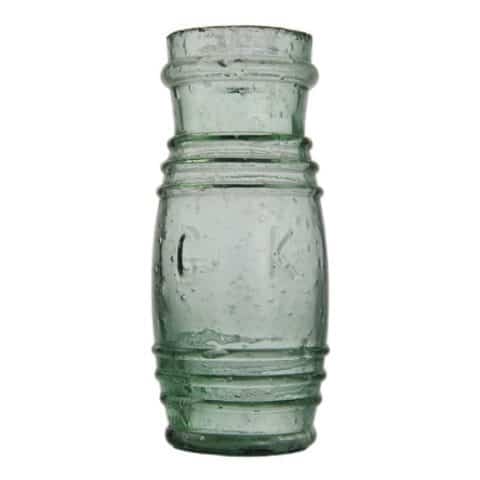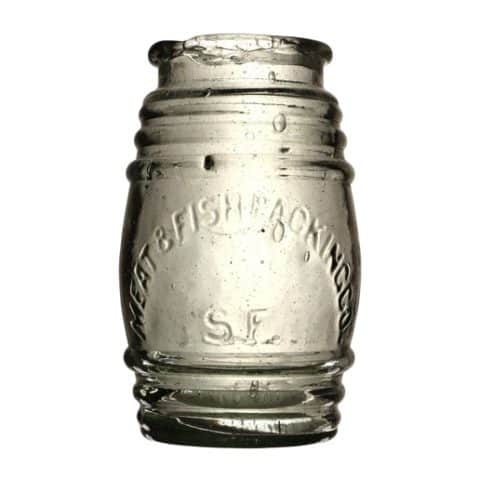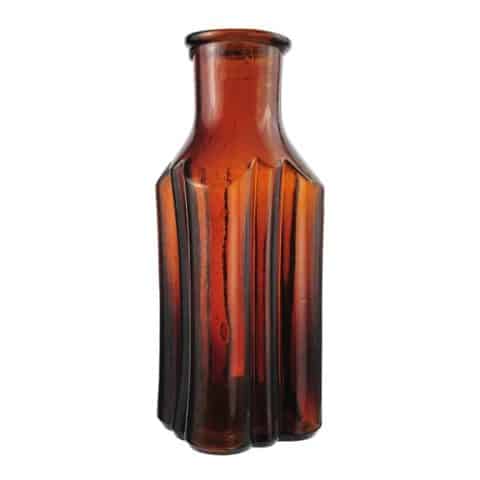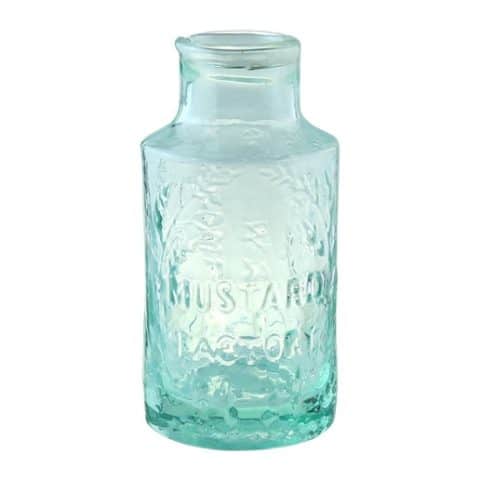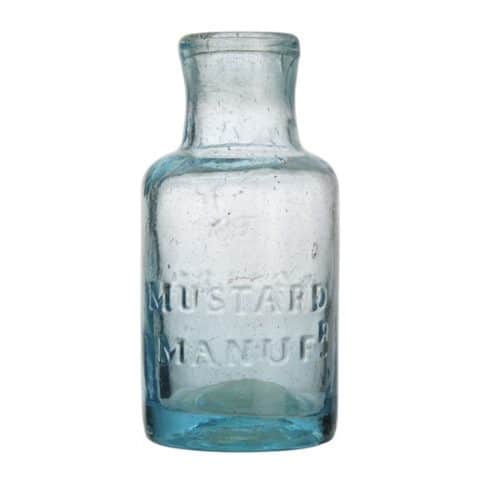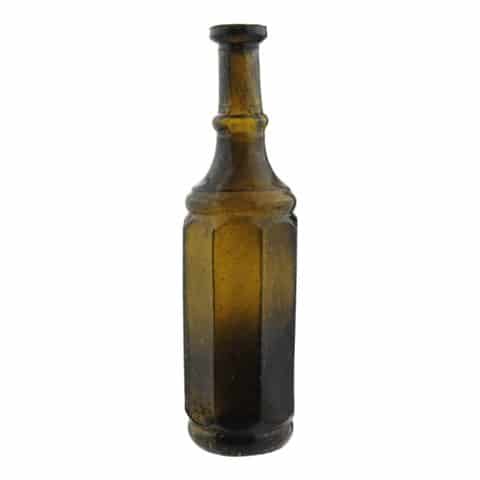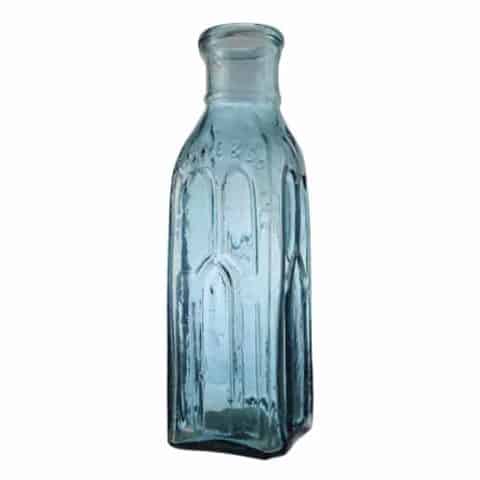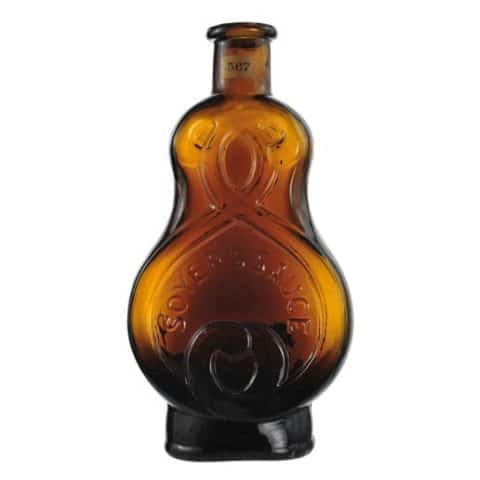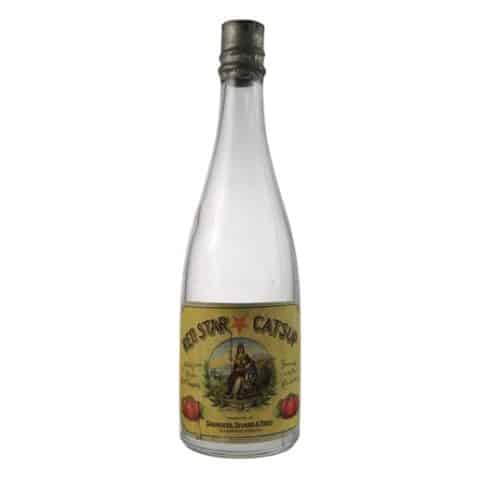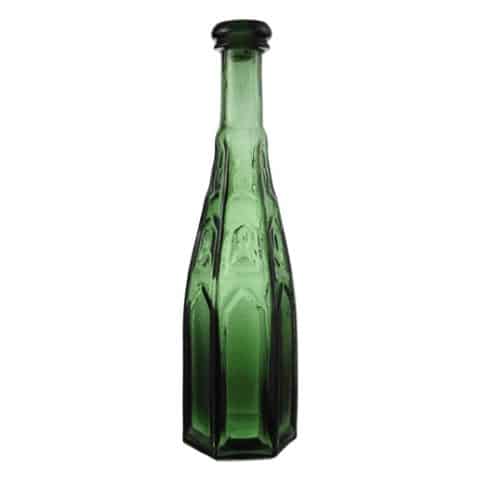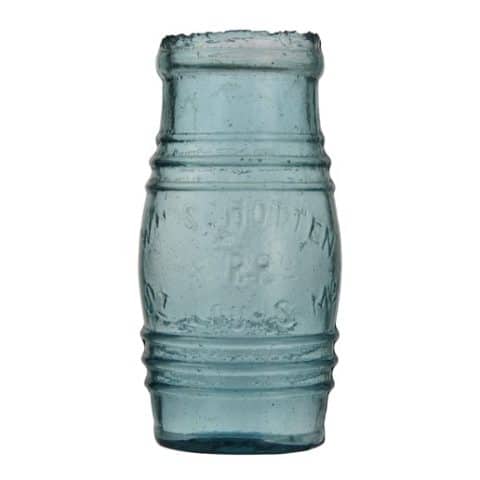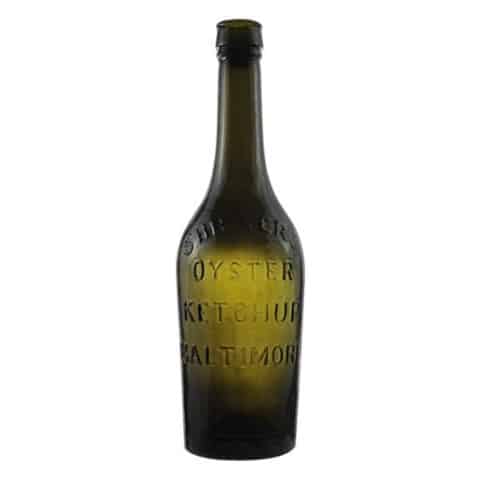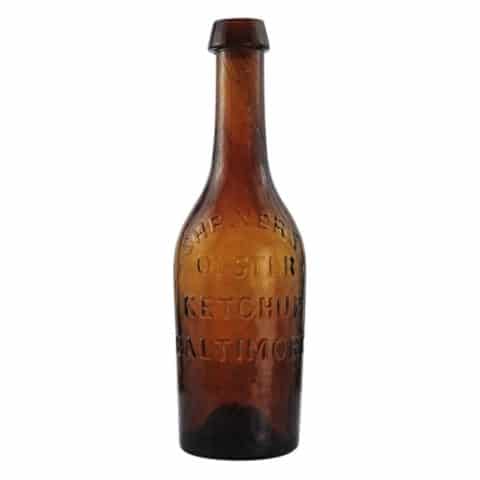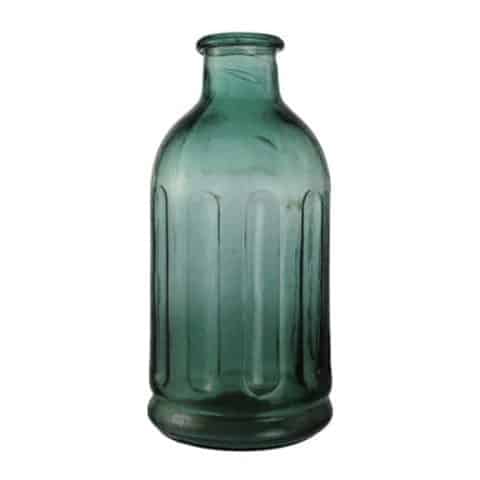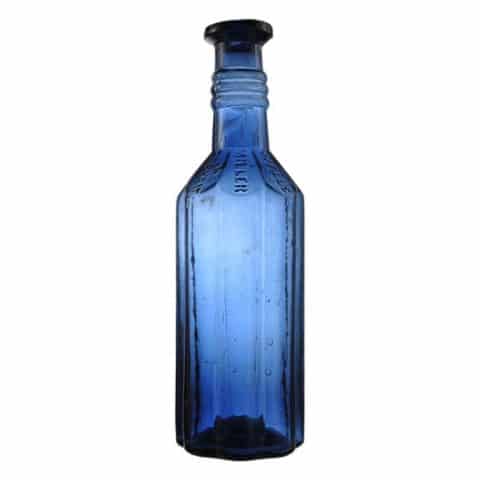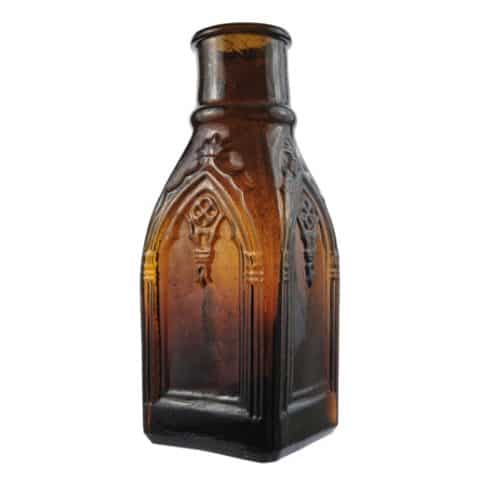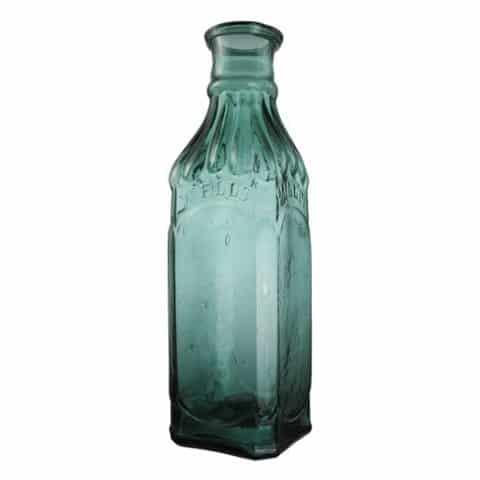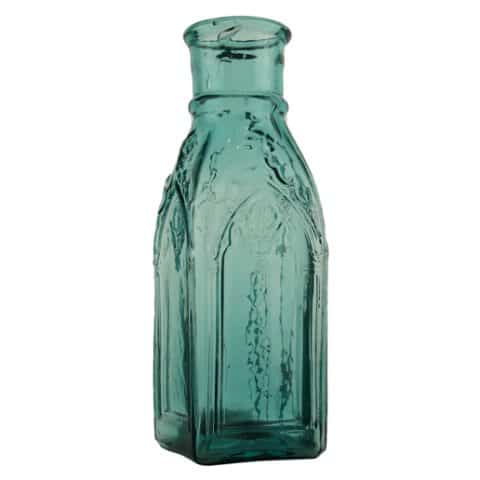J.C. Anderson Pure Lemon Syrup No. 26 Wood St. Pittsburgh
J. C. Anderson Pure Lemon Syrup
No. 26 Wood St.
Pittsburgh
J. C. Anderson & Co., Pittsburgh, Pennsylvania
Blue Green Ovoid Syrup Bottle
Provenance: Chip Cable Collection
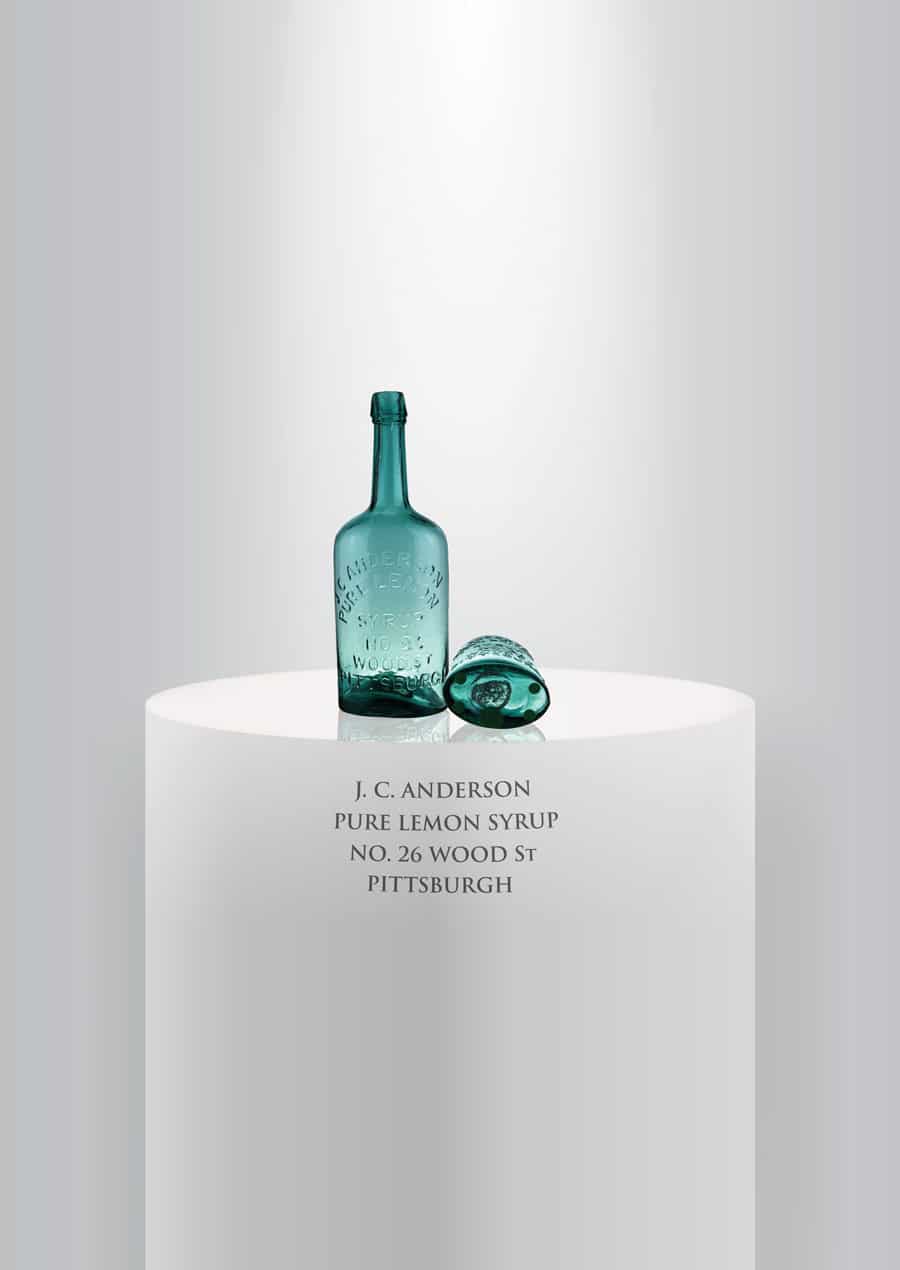
Our museum example of a blue-green “J. C. Anderson Pure Lemon Syrup” was recently found in a barn about a half hour north from where the consignor lives near Pittsburgh. He has a second example where the glass is lighter in color. They are both about 11 inches tall and unique. The bottle on the below left is open pontiled. The blue green example on the right is our museum bottle and is iron pontiled.
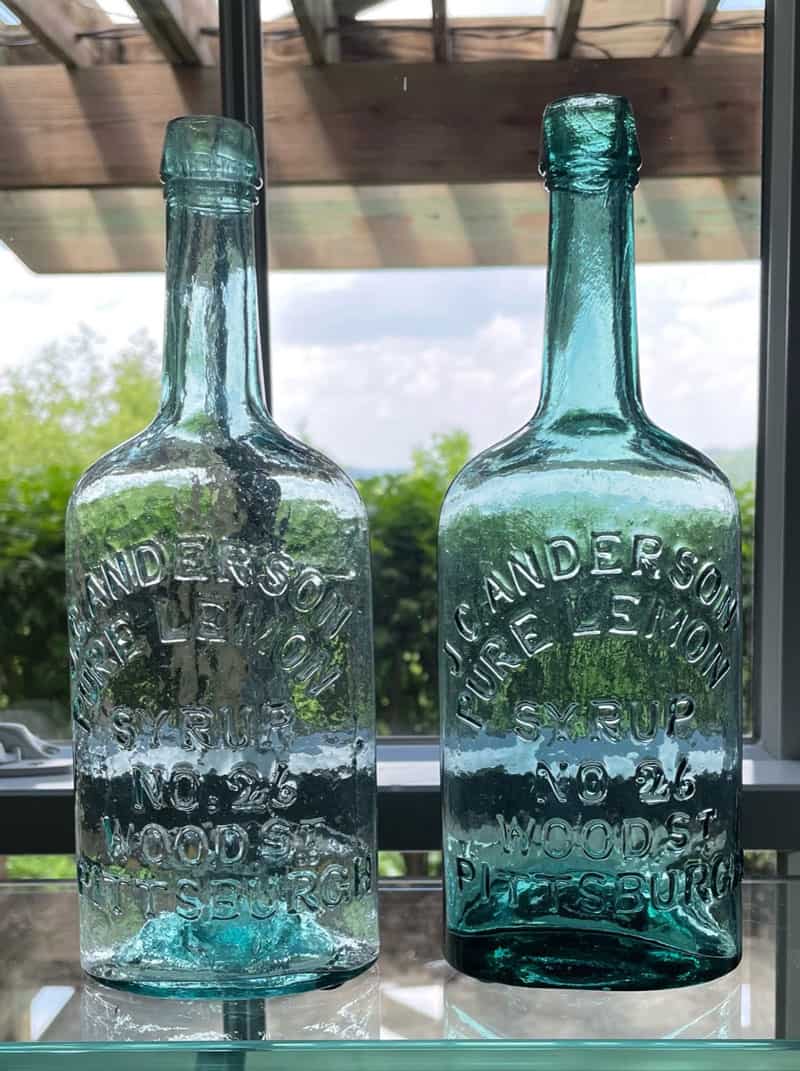
In 1849, Joshua Rhodes placed ads in the Pittsburgh Daily Post saying he was a Wholesale Fruiterer and Confectioner located at No. 6 Wood Street. One ad said had just received 300 boxes of Oranges, 225 boxes of Lemons, 180 dozen Lemon Syrup (which he would bottle), Figs, Raisins, Almonds, Filberts, Walnuts, Cream Nuts, Pecans, Sardines, Herring, Cocoa Nuts, Macaroni, Vermicelli, assorted Pickles, Currants, Prunes, Dates, Licorice, Vanilla Beans, Rock Candy and white and yellow Florence Oil to name a few. He would commission a handsome bottle just like our museum bottle embossed “Joshua Rhodes, No. 39 Wood St. Pittsburgh, Pa.”
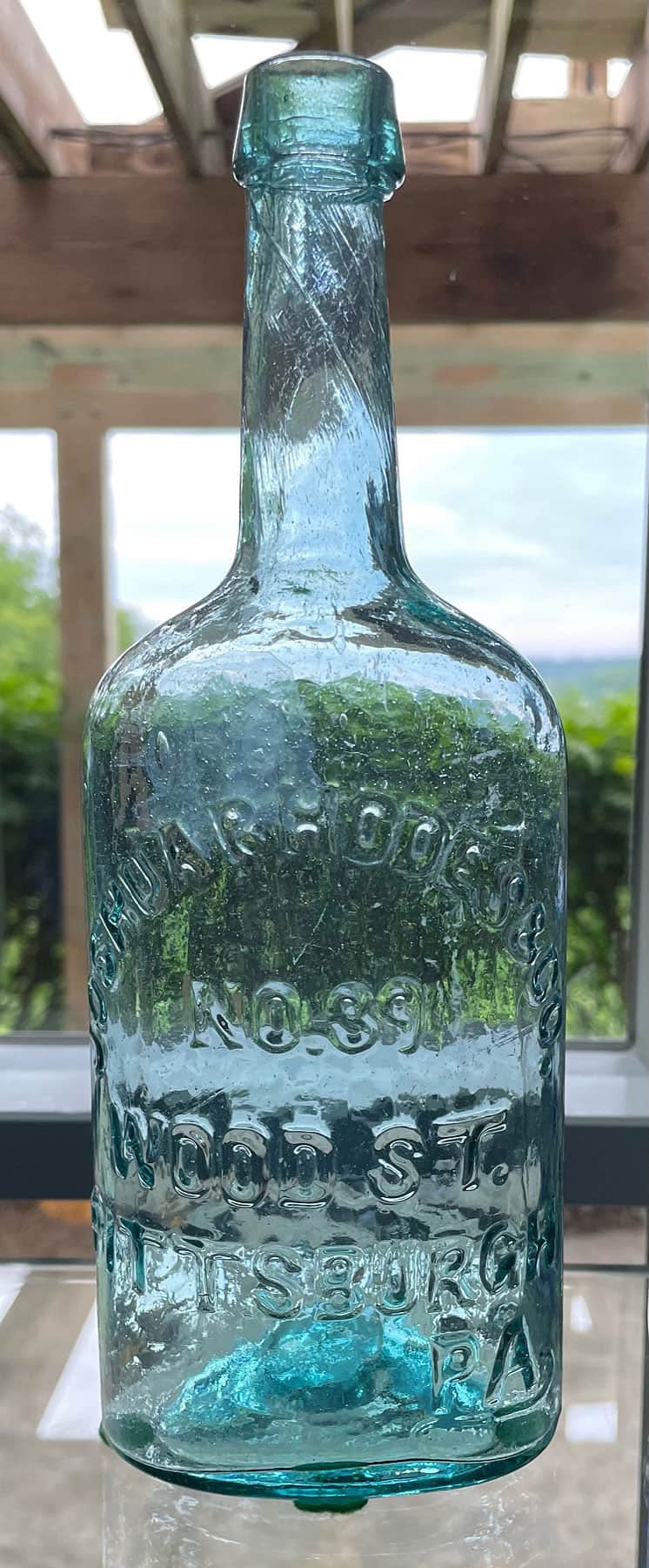
Our museum example is 11 inches tall and ovoid. The bottle is embossed in six lines with a serifed typestyle. The first line is arched downward and reads “J. C. ANDERSON’ while a second curved line beneath the first line reads ‘PURE LEMON.’ The third line is horizontal and reads, ‘SYRUP’ and is captured beneath the two arches above. Three stacked horizontal lines of type read ‘NO 26,’ ‘WOOD ST’ (“T” smaller and raised), and ‘PITTSBURGH.’ The bottle shoulder has strong compound curves. A tall slightly tapered neck connects to a double tapered collar mouth. The base is iron pontiled.
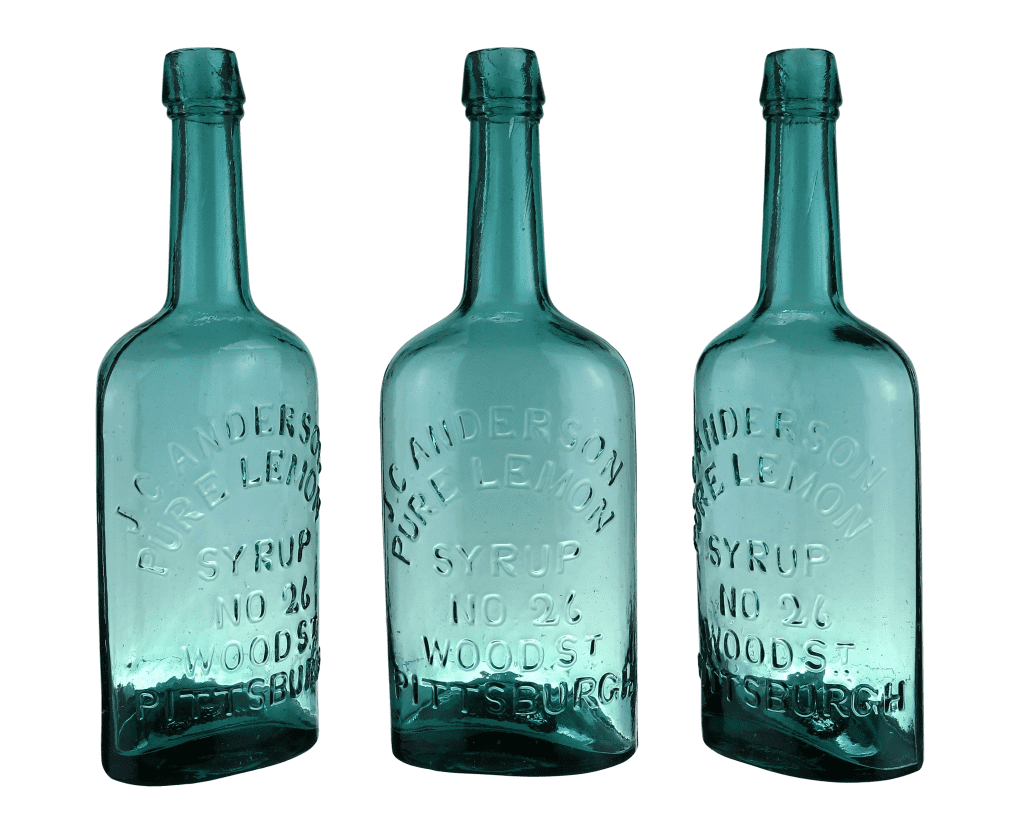
In July 1850, Joshua Rhodes posted a Co-Partnership Notice reading; “I have this day associated with me Alfred P. Anshultz in the Wholesale Fruit and Confectionery business. The business to be conducted under the style of Joshua Rhoads & Co., at the old stand, No. 106 Wood Street.” The three Wood Street addresses are confusing and can be attributed to the ease of mobility of a fruit stand and a storefront business. In January 1852, Rhodes posted a Dissolution of Partnership between Joshua Rhodes and A. P. Aushultz. “The business will be conducted as heretofore by the subscriber at the old stand, No. 6 Wood street.”

Eight months later, in September 1852, J. C. Anderson and Minns Tindle entered into partnership “under the firm and style of J. C. Anderson and Co. in the Wholesale Fruit and Confectionery business at No. 6 Wood Street, Pittsburgh.” Rhodes follows up with a notice, “Having disposed of my entire interest in the Wholesale Fruit and Confectionery business to Messrs. J. C. Anderson and Co., I take pleasure in recommending them to my former friends and customers; and hope from them a continuance of the liberal patronage bestowed on me – Joshua Rhodes.” In November 1854, Anderson posts, “Notice. I have this day associated with me in the wholesale Fruit and Confectionery business, my son, T. H. Anderson. The business hereafter, from this date, November 16th, 1854, will be conducted under the name and style of J. C. Anderson & Son – J. C. Anderson.”
The Pittsburgh Daily Post on September 4th, 1852 notes that as of August 1852, Reymer & Anderson (Philip Reymer & Robert J. Anderson) as the successors to Joshua Rhodes & Co. located at No 39 Wood St. Many downstream historical write-ups have tagged on to the Robert J. Anderson name which is a mistake.
By 1857, Reymer & Anderson were the proprietors of a very successful confectionary in Pittsburgh. Despite the concern’s popularity, J. C. Anderson unexpectedly left the business after a few years, and Reymer bought his shares to establish himself as the sole proprietor. In 1861, Reymer’s two brothers, Jacob S. and Harmar D. joined the firm, and it was renamed Reymer & Brothers.
The business boomed during the Civil War when people sent candies and sweets to the soldiers. By the 1870s, the company had expanded significantly, so much so that they were forced to purchase a new factory to allow for the increased production of more confectionery. Reymer & Brothers’ confectionery was considered to be the best in Pittsburgh and had a reputation for using the finest ingredients. The company was credited with popularizing the fruit and nut Easter egg, the chocolate egg, and also sold exotic fruits, nuts, spices, flavored sugars, bon-bons, cookies, and crackers among many other items.
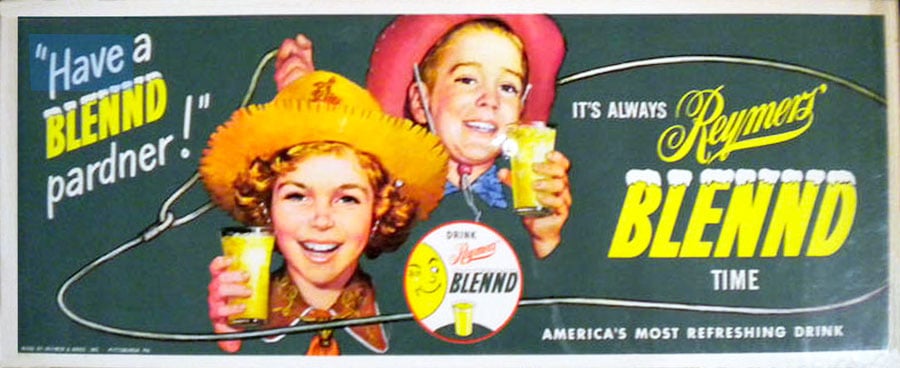
In 1906, the company built a new factory. By then, the Reymer family had left the business, but their name lived on. In 1908 the firm claimed that it was “one of the largest confectionery houses in the world” and that it had 5,000 vendors in the Pittsburgh area.
In October 1865, after the Civil War, there is an advertisement for “Webster Saw and Planing Mill – J. C. Anderson, manufacturer and dealer in all kinds of rough and Worked lumber. Webster, Pa.”
Primary Image: J. C. Anderson Pure Lemon Syrup imaged on location by Alan DeMaison, FOHBC Virtual Museum Midwest Studio.
Support Images: Two “J. C. Anderson Pure Lemon Syrup” bottles and an embossed “Joshua Rhodes, No. 39 Wood St. Pittsburgh, Pa.” bottle photographed by the consignor, Chip Cable.
Join the FOHBC: The Virtual Museum is a project of the Federation of Historical Bottle Collectors (FOHBC). To become a member.


